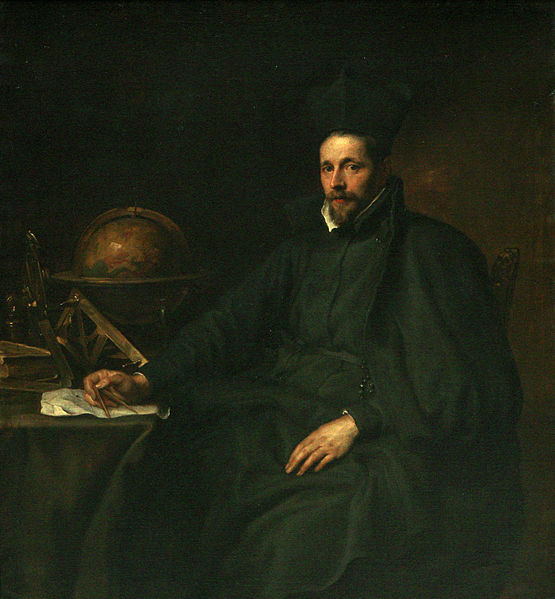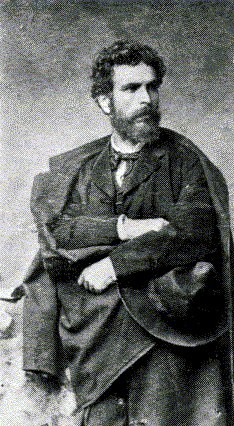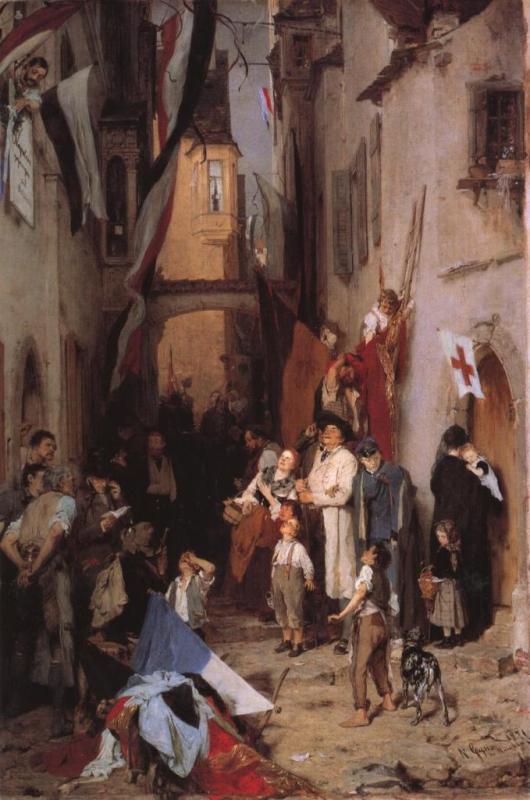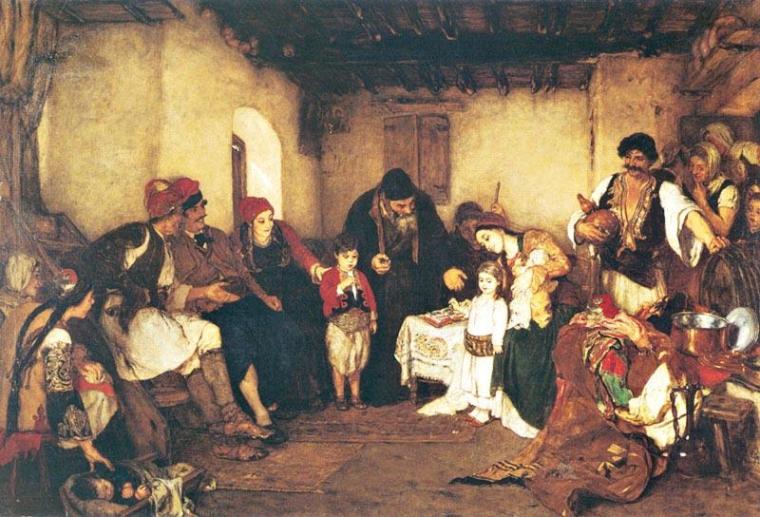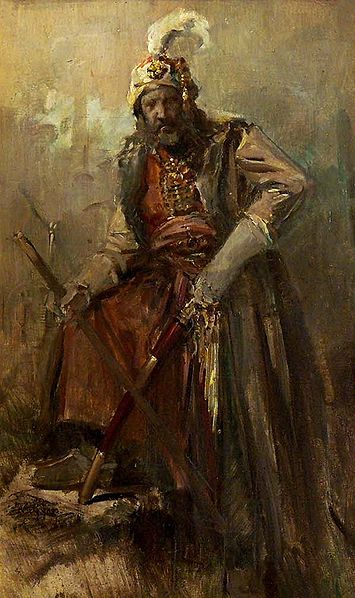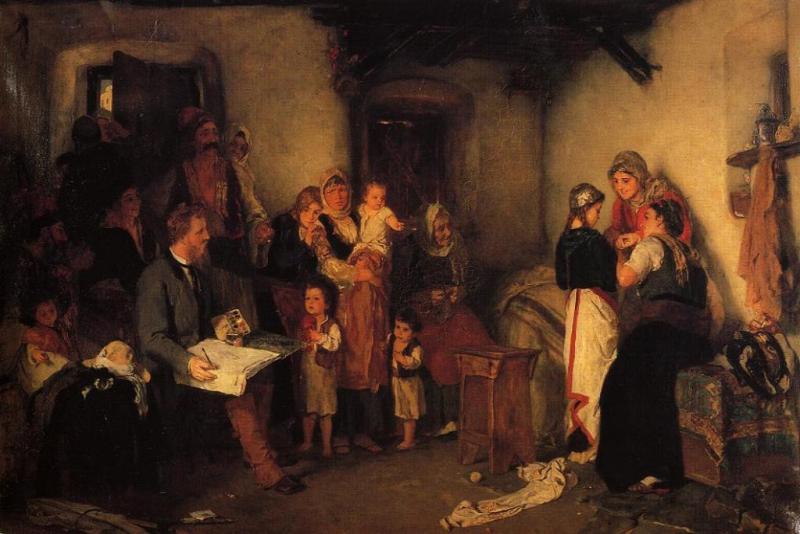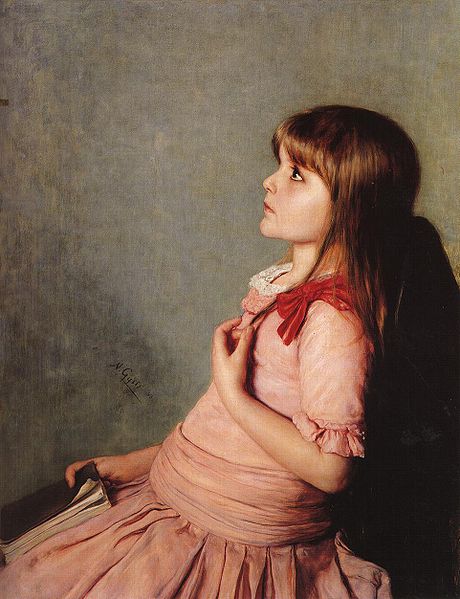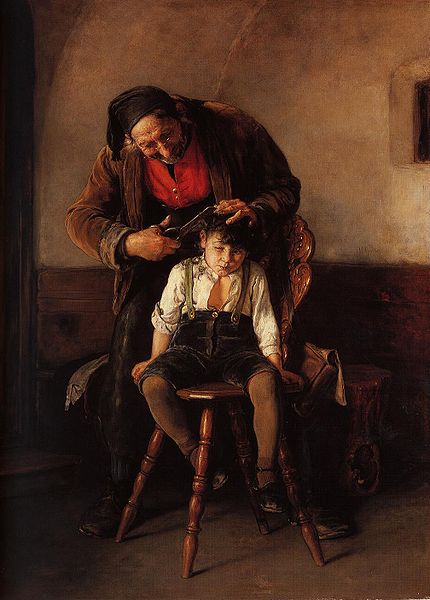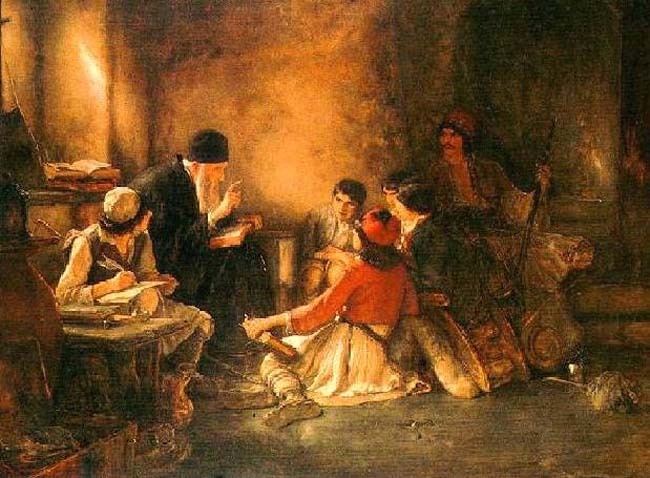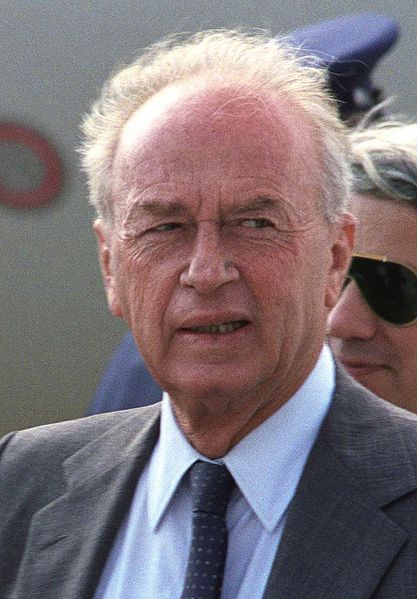
Yitzhak Rabin (1 March 1922 – 4 November 1995) was an Israeli politician and general. He was the fifth Prime Minister of Israel, serving two terms in office, 1974–1977 and 1992 until his assassination in 1995. In 1994, Rabin won the Nobel Peace Prize together with Shimon Peres and Yasser Arafat. He was assassinated by right-wing Israeli radical Yigal Amir, who was opposed to Rabin's signing of the Oslo Accords.
Rabin was the first native-born prime minister of Israel, the only
prime minister to be assassinated and the second to die in office after Levi Eshkol.
Rabin was born in Jerusalem in 1922 to Nehemiah and Rosa, two pioneers of the Third Aliyah. Nehemiah Rubitzov, born in a small Ukrainian town
in 1886, lost his father when he was a child and worked to support his
family from a young age. At the age of 18, he emigrated to the United States, where he joined the Poale Zion party and changed his surname to Rabin. In 1917, Nehemiah went to the British Mandate of Palestine with a group of volunteers from the Jewish Legion. Yitzhak's mother, Rosa Cohen, was born in 1890 in Mohilev in Belarus. Her father, a rabbi, opposed the Zionism movement, but sent Rosa to a Christian high school for girls in Homel,
enabling her to acquire a broad general education. Early on, Rosa took
an interest in political and social causes. In 1919, she sailed to the
region on the S.S. Ruslan, the bellwether of the Third Aliyah. After
working on a kibbutz on the shores of the Sea of Galilee, she moved to Jerusalem. Rabin grew up in Tel Aviv, where the family relocated when he was one year old. In 1940, he graduated with distinction from the Kadoori Agricultural High School and hoped to be an irrigation engineer. However, apart from several courses in military strategy in the United Kingdom later on, he never pursued a degree.
Rabin married Leah Rabin (born Schlossberg) during the 1948 Arab-Israeli War. Leah Rabin was working at the time as a reporter for a Palmach newspaper. They had two children, Dalia and Yuval. Rabin was non-religious. In 1941, during his practical training at kibbutz Ramat Yohanan, Rabin joined the Palmach section of the Haganah, under the influence of Yigal Allon. The first operation he participated in was assisting the allied invasion of Lebanon, then held by Vichy French forces (the same operation where Moshe Dayan lost his eye) in June-July 1941. After the end of the war the relationship between the Palmach and the British authorities became
strained, especially with respect to the treatment of Jewish
immigration. In October 1945 Rabin was in charge of planning and later
successfully executing an operation for the liberation of interned
immigrants from the Atlit detainee camp for Jewish illegal immigrants. In the Black Shabbat, a massive British operation against the leaders of the Jewish Establishment in the Land of Israel,
Rabin was arrested and detained for five months. After his release he
became the commander of the second Palmach battalion and rose to the
position of Chief Operations Officer of the Palmach in October 1947.
During the 1948 Arab-Israeli War Rabin directed Israeli operations in Jerusalem and fought the Egyptian army in the Negev. During the beginning of the war he was the commander of the Harel Brigade, which fought on the road to Jerusalem from the coastal plain, including the Israeli "Burma Road", as well as many battles in Jerusalem, such as securing the southern side of the city by recapturing kibbutz Ramat Rachel. During the First truce he participated in the altercation between the IDF and the Irgun on the beach of Tel Aviv as part of the Altalena Affair. In the following period he was the deputy commander of Operation Danny, during which the cities of Ramle and Lydda were captured, as well as the major airport in Lydda. Following the capture of the two towns there was an exodus of their Arab population and only a few hundred of the 50,000 to 70,000 residents remained.
Operation Danny was the largest scale operation until then and it
involved four IDF brigades. He was then Chief of Operations for the
Southern Front and participated in the major battles ending the
fighting there, including Operation Yoav and Operation Horev.
In the beginning of 1949 he was a member of the Israeli delegation to
the armistice talks with Egypt that were held on the island of Rhodes. The result of the negotiations were the 1949 Armistice Agreements which ended the official hostilities of the 1948 Arab-Israeli War. Following the demobilization at the end of the war he was the most senior (former) member of the Palmach that remained in the IDF.
In 1964 he was appointed Chief of Staff of the Israel Defense Forces (IDF) by Levi Eshkol who replaced David Ben Gurion and, like him, served as Prime-Minister and Minister of Defense.
Since Eshkol did not have much military experience, Rabin had a
relatively free hand. Under his command, the IDF achieved victory over Egypt, Syria and Jordan in the Six-Day War in 1967. After the Old City of Jerusalem was captured by the IDF, Rabin was among the first to visit the Old City, and delivered a famous speech on Mount Scopus, at the Hebrew University. In the days leading up to the war, it was reported that Rabin suffered a nervous breakdown and was unable to function. After this short hiatus, he resumed full command over the IDF.
Following his retirement from the IDF he became ambassador to the United States beginning
in 1968, serving for five years. In this period the US became the major
weapon supplier of Israel and in particular he managed to get the
embargo on the F-4 Phantom fighter jets lifted. During the 1973 Yom Kippur war he served in no official capacity and in the elections held at the end of 1973 he was elected to the Knesset as a member of the Alignment. He was appointed Israeli Minister of Labour in March 1974 in Golda Meir's short-lived government. Following Golda Meir's resignation on April 1974, Rabin was elected party leader, after he defeated Shimon Peres.
The rivalry between these two labor leaders remained fierce and they
competed several times in the next two decades for the leadership role.
Rabin succeeded Golda Meir as Prime Minister of Israel on 3 June 1974. This was a coalition government that
held for a few months and was one of the few periods in Israel's
history where the religious parties were not part of the coalition. In foreign policy, the major development at the beginning of Rabin's term was the Sinai Interim Agreement between
Israel and Egypt, signed on September 1, 1975. Both countries declared
that the conflict between them and in the Middle East shall not be
resolved by military force but by peaceful means. The agreement was an
important step towards the Camp David Accords of 1978 and the peace treaty with Egypt signed in 1979. Operation Entebbe was
perhaps the most dramatic event during Rabin's first term of office. On
his orders, the IDF performed a long-range undercover raid to rescue
passengers of an airliner hijacked by militants belonging to the Popular Front for the Liberation of Palestine's Wadie Haddad faction and the German Revolutionary Cells (RZ), that had been brought to Idi Amin's Uganda.
The operation was generally considered a tremendous success, and its
spectacular character has made it the subject of much continued comment
and study.Towards the end of 1976 his coalition government with the religious parties suffered a crisis.
Rabin dissolved his government and decided on new elections, which were
to be held in May 1977. Meanwhile two unfortunate developments from his
perspective occurred: following the March 1977 meeting between U.S.
President Jimmy Carter and
Rabin, Rabin publicly announced that the U.S. supported the Israeli
idea of defensible borders. Carter then issued a clarification. A
"fallout" in U.S./Israeli relations ensued. It is thought that the
fallout contributed to the Israeli Labor Party defeat in the May 1977
elections. The second development was the revelation that his wife, Leah, continued to hold a US dollar account from
the days that Rabin was ambassador to the United States. According to
Israeli currency regulations at the time, it was illegal for citizens
to maintain foreign bank accounts without prior authorization.
Following his resignation and Labor Party defeat at the elections, Likud's Menachem Begin was elected in 1977. Until 1984 Rabin was a member of Knesset and sat on the Foreign Affairs and Defense Committee. From 1984 to 1990, he served as Minister of Defense in several national unity governments led by prime ministers Yitzhak Shamir and Shimon Peres.
When
Rabin came to office, Israeli troops were still deep in Lebanon. Rabin
ordered their withdrawal to a "Security Zone" on the Lebanese side of
the border. The South Lebanon Army was active in this zone, along with the Israeli Defence Forces. When the first Intifada broke
out, Rabin adopted harsh measures to stop the demonstrations, even
authorizing the use of "Force, might and beatings," on the
demonstrators. Rabin the "bone breaker" was used as an International image. The
combination of the failure of the "Iron Fist" policy, Israel's
deteriorating international image and Jordan cutting legal and
administrative ties to the West Bank with the U.S.'s recognition of the
PLO as the representative of the Palestinian people forced Rabin to
seek an end to the violence though negotiation and dialogue with the
PLO. In 1990 to 1992, Rabin again served as a Knesset member and sat on the Foreign Affairs and Defense Committee.
In 1992 Rabin was elected as chairman of the Labor Party, winning against Shimon Peres. In the elections that year his
party, strongly focusing on the popularity of its leader, managed to
win a clear victory over the Likud of incumbent Prime Minister Yitzhak
Shamir. However the left-wing bloc in the Knesset only
won an overall narrow majority, facilitated by the disqualification of
small nationalist parties that did not manage to pass the electoral
threshold. Rabin formed the first Labor-led government in fifteen
years, supported by a coalition with Meretz, a left wing party, and Shas, a Mizrahi ultra-orthodox religious party. Rabin played a leading role in the signing of the Oslo Accords, which created the Palestinian National Authority and granted it partial control over parts of the Gaza Strip and West Bank. Prior to the signing of the accords, Rabin received a letter from PLO Chairman Yasser Arafat renouncing violence and officially recognizing Israel, and on the same day, 9 September 1993, Rabin sent Arafat a letter officially recognizing the PLO. During this term of office, Rabin also oversaw the signing of the Israel-Jordan Treaty of Peace in 1994. For his role in the creation of the Oslo Accords, Rabin was awarded the 1994 Nobel Peace Prize, along with Yasser Arafat and Shimon Peres. Rabin was also awarded the 1994 Ronald Reagan Freedom Award.
On 4 November 1995 (11th of Heshvan on the Hebrew Calendar) Prime Minister Rabin was assassinated by Yigal Amir, a radical right-wing Orthodox Jew
who opposed the signing of the Oslo Accords and believed he was saving
the country from a dire fate. The shooting took place in the evening as
Rabin was leaving a mass rally in Tel Aviv in support of the Oslo process. Rabin was rushed to the nearby Ichilov Hospital,
where he died on the operating table of blood loss and a punctured lung
within 40 minutes. Amir was immediately seized by Rabin's bodyguards.
He was tried, found guilty, and sentenced to life imprisonment.
After an emergency cabinet meeting, Israel's foreign minister, Shimon Peres was appointed as acting Israeli prime minister.
